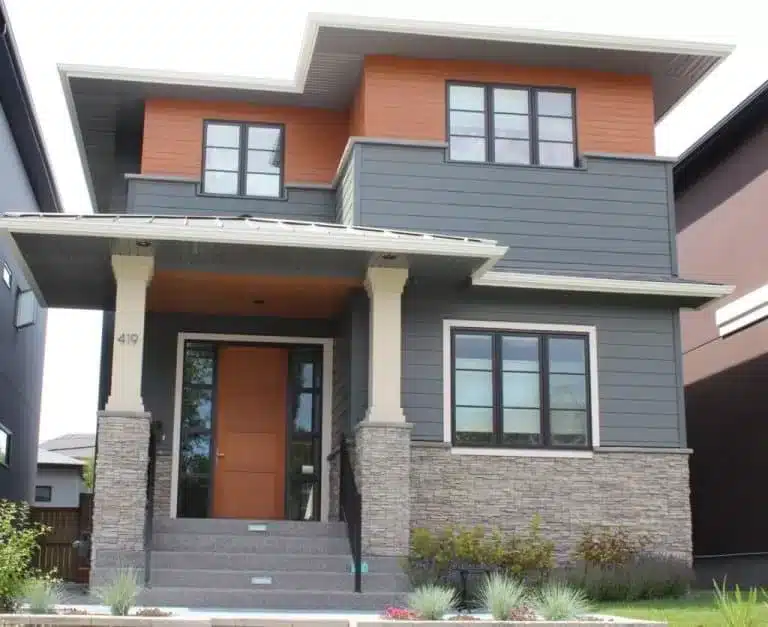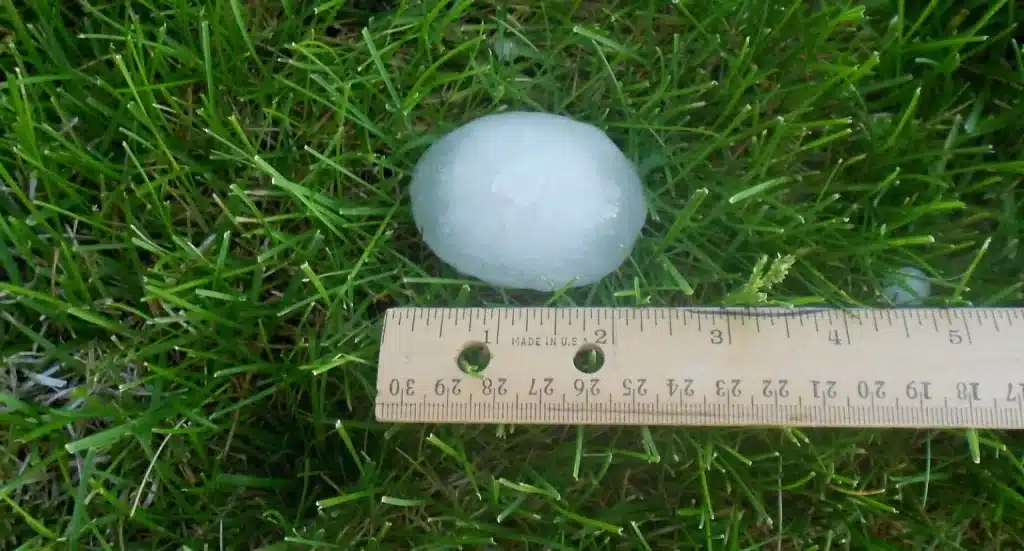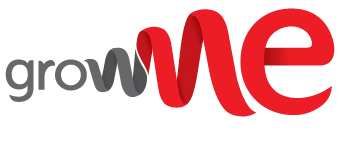Anyone who’s lived in Alberta for a year or two understands that its climate presents unique challenges for homeowners. The weather here is often harsh (especially the hail of 2020) and rarely predictable — snow, hail, and thundershowers have been known to batter Calgary houses all within the same month!
Given these challenges, Alberta homeowners need to use siding that can adequately protect their properties. James Hardie siding (also known as Hardie board) represents one excellent option, but what makes it different from other materials? As experienced professionals who install siding on many area homes and commercial properties, we’re here to tell you exactly why Hardie board is such a smart investment.
Hardie Board 101: a Brief History and Overview
Hardie board in Calgary is produced exclusively by the James Hardie company. The business is named for its founder, James Hardie, a Scotsman who moved to Australia in the 1880s and started a business importing oils and tanning products.
In the latter half of the 20th century, the James Hardie company began producing various building and industrial products. In the 1980s, they developed the unique fiber-cement building technology that became the basis for Hardie board siding.
What is Hardie Board Siding?
Hardie board siding uses the James Hardie company’s unique fiber-cement technology to create a resilient and highly-customizable product. It has four main ingredients:
- Cellulose fibers: to improve the flexibility and resistance of the final product
- Sand: to function as a filler material
-
- Water: to activate the cement and make it harden
- Portland cement: to bind the other ingredients together
Other fiber cement types may use fly ash instead of sand or wood pulp instead of cellulose fibers. However, James Hardie brand siding is made with a carefully controlled formula and several proprietary additives to keep the quality consistent.

Why is James Hardie Siding Popular?
Hardie board is a semi-rigid siding type that offers both protection and flexibility. The material’s versatility allows homeowners to purchase it in a wide range of colours and textures. As such, Hardie board makes an ideal choice for people who want to keep their houses safe from the elements without compromising appearances.
Hardie board siding is also fairly affordable in relation to other materials. For example, wood siding typically costs more than $10 per square foot and doesn’t offer the same level of protection that Hardie board provides. Hardie board siding generally starts at about $7 per square foot, making it less expensive and more reliable in Alberta’s unpredictable weather.
How Hardie Board Performs in Alberta Conditions
Now that you know what Hardie board is and why people love it, it’s time for the tough questions. Specifically: how does Hardie board stack up against vinyl, and will it protect against the unique combination of elements commonly found in Alberta?
Hardie Board vs. Vinyl: Pros and Cons
Vinyl is one of North America’s most popular home siding materials. Like Hardie board, it comes in many different colours and textures. However, that’s where the similarities end.
Here’s a breakdown of the significant differences between these two materials:
- Longevity: Vinyl is prone to cracking and warping in cold temperatures. Hardie board maintains its integrity in practically any climate, making it much more reliable for the harsh Alberta winters and brief, hot summers.
- Weather resistance: Vinyl siding is tough but not indestructible. Alberta hailstorms can — and often do — destroy it beyond repair.
Hardie board siding is specifically designed to resist inclement weather, from blizzards to pelting hail and torrential rain. If you’re looking for siding that can take a beating, it’s a much better alternative.
- Safety: One of vinyl’s most significant drawbacks is that it’s made from plastic. In a fire, vinyl siding melts quickly — and releases toxic chemicals as it burns.
Hardie board siding is fire-resistant. If there’s an accident on your street and one of your neighbour’s houses catches fire, having Hardie board siding on your home will likely reduce the damage done to your property.
- Price: This is one area where vinyl beats out Hardie board — at first. When you account for the installation costs, Hardie board can be nearly twice as expensive as vinyl siding. However, since it will likely last longer, need fewer repairs, and survive accidents more effectively, the long-term savings may offset the initial price.
Hardie Board and Canadian Weather
Hardie board’s real value to Albertans who live in rugged environments is its ability to withstand punishment from the elements. Even national handyman hero Mike Holmes has touted the merits of Hardie board siding in Canada, claiming that “it won’t crack, burn, or rot; it will last for years and is really good at protecting your home against water and extreme climates.”
Yes, it might cost more to put James Hardie siding on your home than vinyl. However, the long-term advantages for homeowners who want to protect their investments are clear. Hardie board siding simply offers low-maintenance safety and weather resistance that other siding materials can’t match.
Choose Appropriate Siding for Your Environment
Many Calgarians opt for alternative siding options which appeal more to them aesthetically (such as Aluminum, Wood or Stucco) but they aren’t always the most durable or long lasting. This doesn’t mean that you can’t play with a variety of finishes to achieve your desired look but if you want long-term protection for your home, we highly recommend Hardie board siding.

 | Website Design Calgary |
| Website Design Calgary |